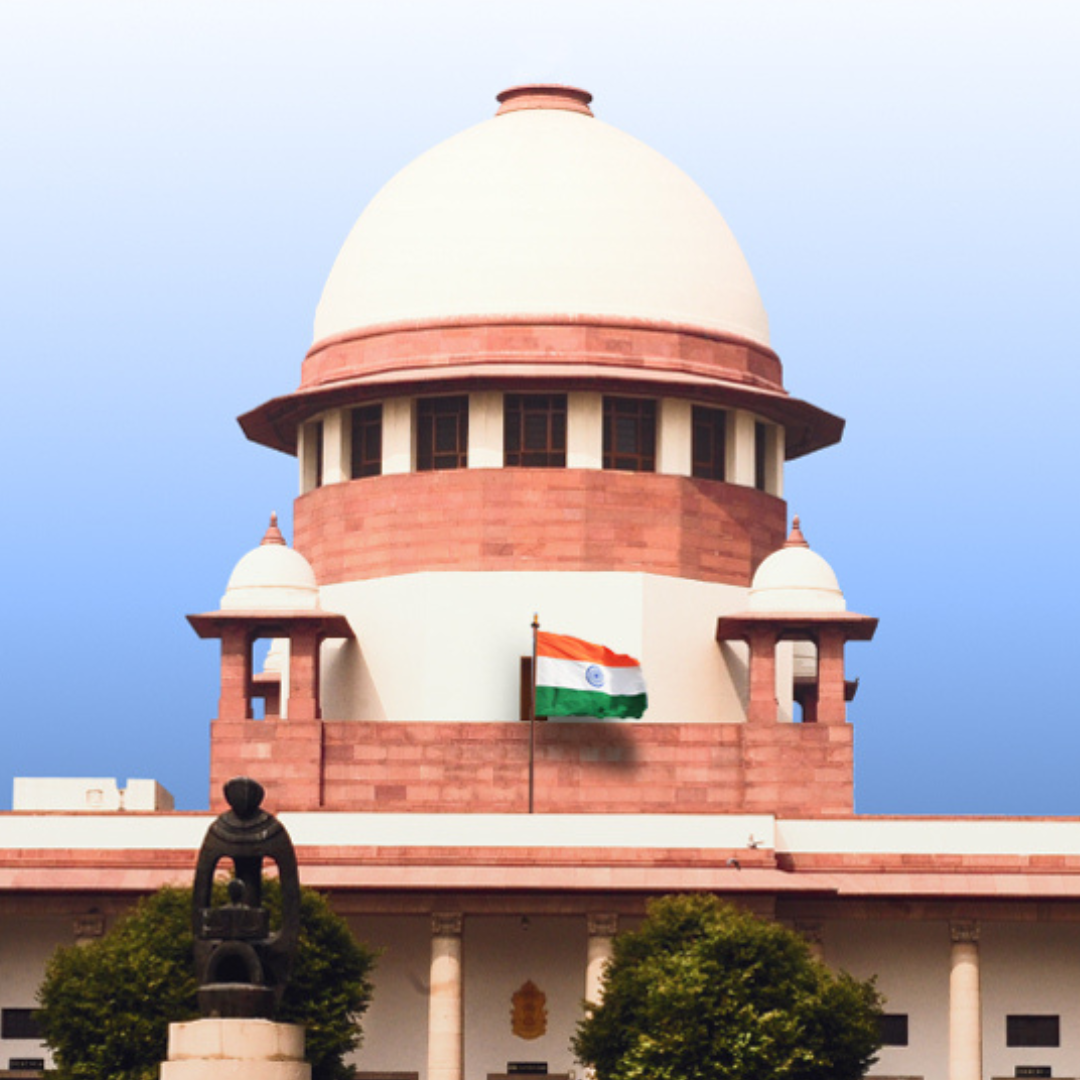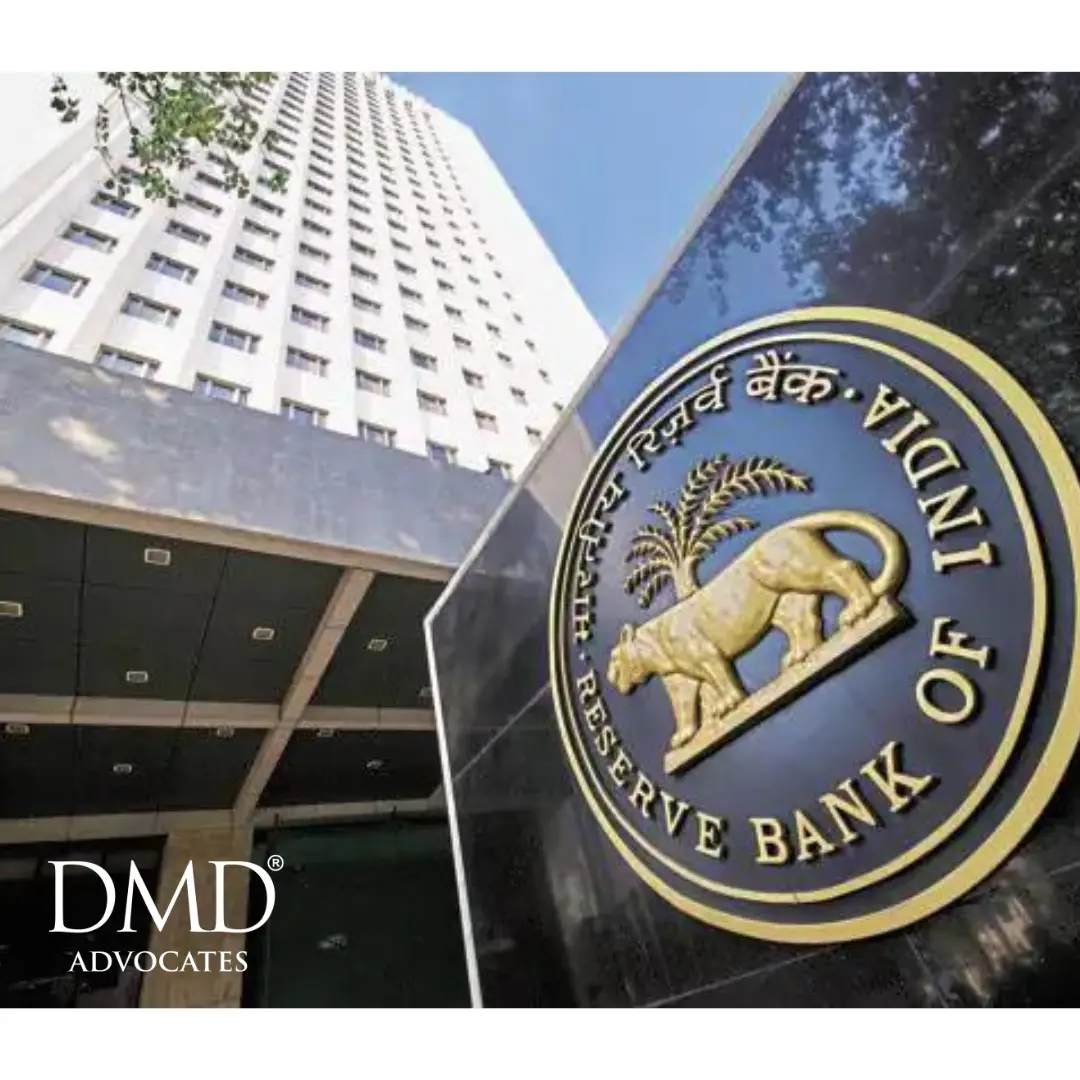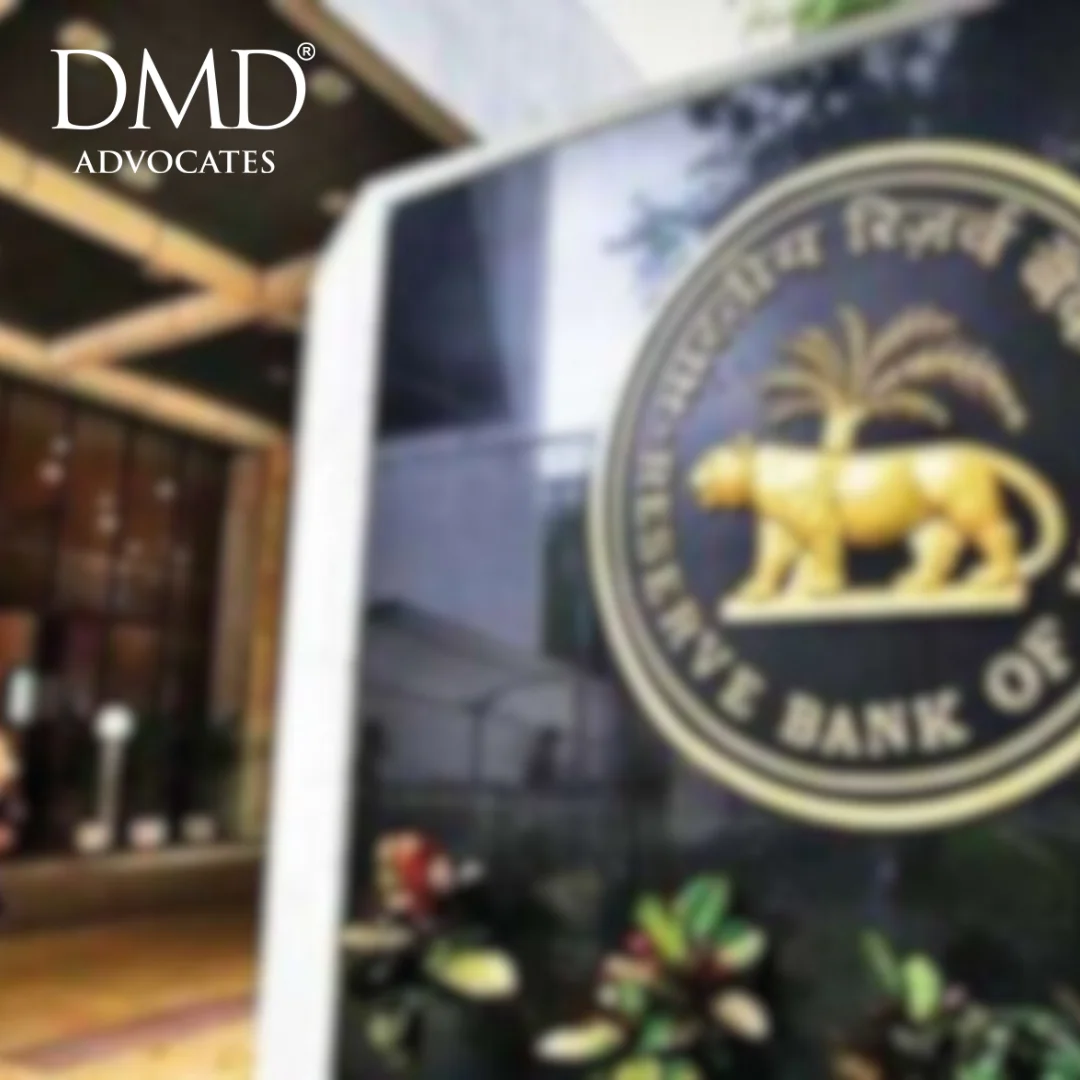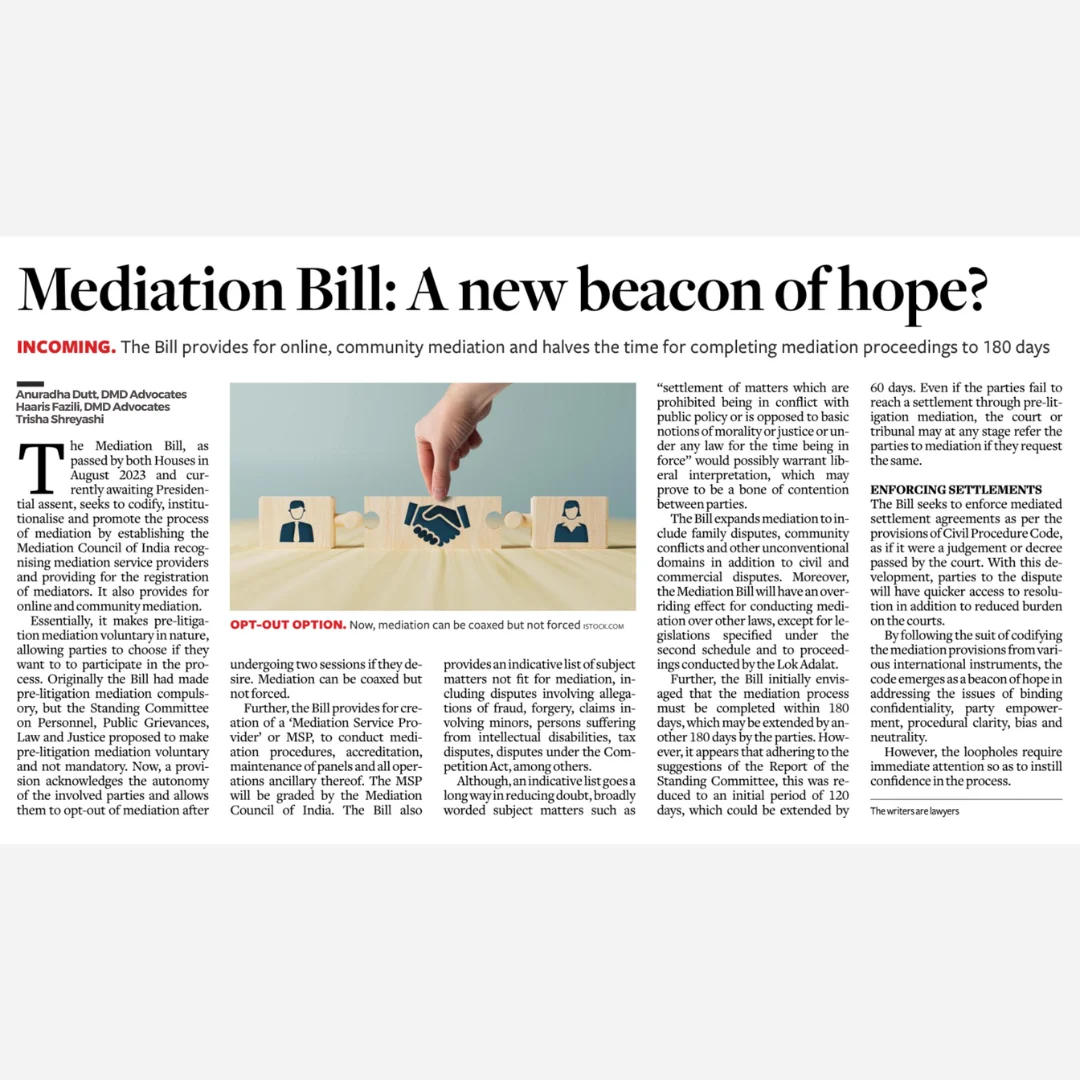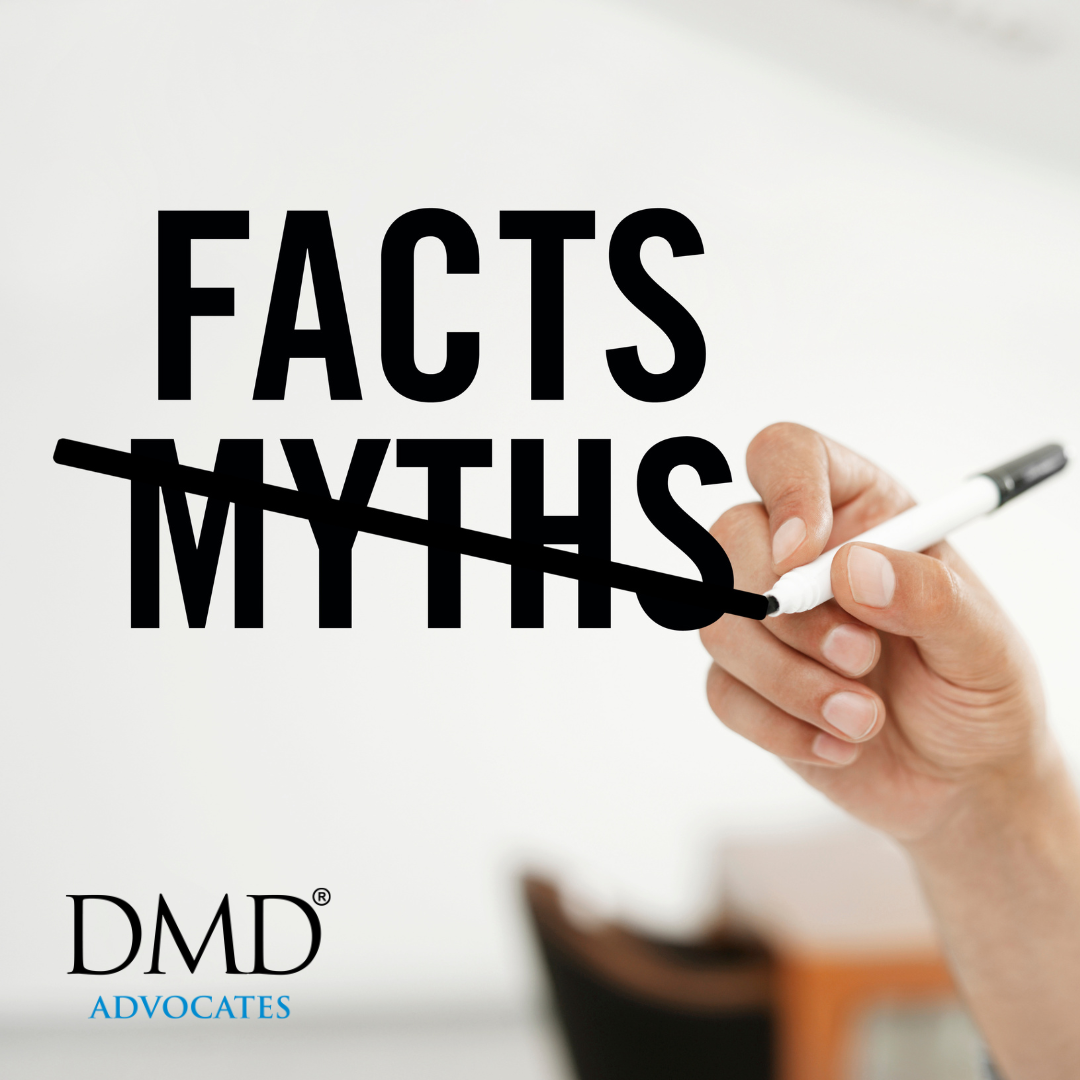Publications
Supreme Court’s Decision to Review ‘Vijay Madanlal Chaudhary v. Union of India’, And Potential Knock-On Effects
15 Sep 2022
- DMD
- Article
The Supreme Court on 25 August 2022 issued notice on a review petition, Karti P Chidambaram v. Directorate of Enforcement R.P. (Crl.) No. 219/2022, seeking review of the judgment passed just about a month earlier in Vijay Madanlal Choudhary v. Union of India SLP (Crl.) No. 4634 of 2014, which attempted to lay to rest various controversies arising under the Prevention of Money Laundering Act, 2002 (PMLA). The Supreme Court observed that at least of the two issues in the review petition required consideration. First, not providing the accused with a copy of the Enforcement Case Information Report or ECIR; and second, the reversal of the burden of proof and the presumption of innocence.
This is a positive development, as the judgment in Vijay Madanlal Choudhary confirmed the Directorate of Enforcement’s uncanalised discretion to initiate prosecutions under the PMLA even where there is neither act nor intention to project tainted funds as untainted; and blessed the Directorate of Enforcement’s policy of refusing to provide the ECIR to the accused, thus hamstringing the accused’s ability to challenge the initiation of proceedings under the PMLA.
The reference to “at least two of the issues” is also important – as even though the Directorate of Enforcement on 26 August 2022 filed an affidavit seeking to limit the notice issued to only two issues – a review of these issues alone will no doubt have knock-on effects on various other findings in the judgment.
Providing the accused with a copy of the ECIR:
The first of the two issues discussed in court on 25 August 2022 is the providing the accused with a copy of the ECIR. The primary justifications in Vijay Madanlal Choudhary for treating the ECIR as an ‘internal document’ of the Directorate of Enforcement and distinct from a First Information Report (FIR) registered by vanilla investigative agencies such as the State Police or the Central Bureau of Investigation, are:
-That the manner of conducting an investigation by the Directorate of Enforcement cannot be governed by analogies drawn from the Code of Criminal Procedure, 1973.
-That the Directorate of Enforcement is a special investigative body governed by a special mechanism, and its officers are not police officers within the meaning of the Code of Criminal Procedure, 1973.
-That though the ECIR represents the starting point of initiating penal action or prosecution by the Directorate of Enforcement, and is, for all intents and purposes, analogous to an FIR, there is neither statutory mandate nor requirement to ‘formally register’ an ECIR.
While the Court in Vijay Madanlal Choudhary was undoubtedly correct in stating that the ECIR is not mandated by statute, the ECIR remains the only document and piece of evidence which can possibly contain an articulation of the jurisdictional facts necessary for the exercise of powers under the PMLA. To initiate an investigation under the PMLA without any record of jurisdictional facts would likely amount to an impermissible roving and fishing inquiry.
There is a growing and pernicious tendency among statutory and executive authorities to withhold documents by classifying them as ‘internal’ or ‘secret’ – especially when these documents are the basis for curtailing fundamental rights. Whether the document withheld is an ECIR, ‘secret’ information/reports/file-notings or Look Out Circulars (which prevent people from leaving India), the motive behind the concealment is clear – to arrogate to these authorities the ability to curtail fundamental rights, while side-stepping judicial review. This practice of government agencies indirectly curtailing the plenary jurisdiction of the High Courts under Section 482 of the Code of Criminal Procedure, 1973, and under Articles 226 and 227 of the Constitution of India, must be stopped.
For any accused to validly challenge the initiation of an investigation under the PMLA, and to question the existence of jurisdictional fact(s), it is imperative for both the accused and the court hearing the challenge to know the basis for initiation of action under the PMLA. The Court’s analysis in Vijay Madanlal Choudhary that Section 19(1) of the PMLA is a sufficient safeguard, since the accused will be sufficiently informed of the grounds of arrest, misses the point. The very initiation of action under the PMLA ought to be amenable to meaningful judicial review to test whether the State – acting through the Directorate of Enforcement – is violating fundamental rights without the authority of law.
Put simply – regardless of whether the ECIR is a statutory mandate – in the case of an FIR, the accused has the right to seek redress from court for violation of procedural guarantees and fundamental rights from the very beginning, i.e., at the registration of the FIR – though this power is exercised sparingly by the High Courts under Section 482 of the Code of Criminal Procedure, 1973. An accused in an FIR can thus move court against the initiation of an investigation by the police on several grounds, e.g. that they are not named in the FIR, that the FIR points to the guilt of someone else, that the allegations in the FIR are manifestly attended by mala fides or that even assuming the accusations in the FIR to be true, they are on the face of it absurd, inherently improbable, do not disclose the commission of the offence alleged, etc. (in terms of State of Haryana v. Bhajan Lal, 1992 Supp (1) SCC 335). By withholding the ECIR on the ground that it is an ‘internal document’ unlike an FIR, the Directorate of Enforcement seeks to sidestep not only judicial scrutiny, but to also sidestep a rich body of jurisprudence on quashing FIRs. There is no justification for denying meaningful access to the High Courts to an accused in an ECIR, however sparingly the power to quash the FIR/ECIR may be exercised.
Knock-on effects of furnishing the ECIR:
A review on the issue of not providing the ECIR to the accused can be justified on any number of grounds, however the effect of review would result in the Directorate of Enforcement being a little less ‘special’ and inching their position closer to that of the ‘regular police officer’ referred to throughout the judgment under review. Though the Court in Vijay Madanal Choudhary spent significant time distinguishing why Tofan Singh v. State of Tamil Nadu (2021) 4 SCC 1, where Customs Officers acting under the NDPS Act were treated as police officers, would not apply, there is good reason (strategically) why the Additional Solicitor General argued that Tofan Singh was per incuriam. Even if the safeguards available under the Code of Criminal Procedure are not available in ‘pen and ink’, the more the officer of the Directorate of Enforcement resembles a ‘regular police officer’, the more reason there is for accused in a PMLA case to have access to the same, or at least similar, safeguards. The corollary to such a review would be that the issue of analogies to the Code of Criminal Procedure, 1973 require a re-look. This would include the admissibility of incriminating statements under Section 50 of the PMLA, since being named in the ECIR (and having access to it), like being named in the FIR, may be sufficient to claim that the person summoned is an accused, and may invoke the right against self-incrimination.
While the Court spent much time extolling the virtues of the safeguards baked into Sections 17-19 of the PMLA, a requirement to furnish the ECIR would likely also demand a re-look at the manner in which the powers of arrest, search, and seizure, are exercised by the Directorate of Enforcement, since similar safeguards are admittedly insufficient when it comes to the ‘regular police officer’. Even if Sections 17-19 are not reviewed per se, furnishing the ECIR itself would add an additional layer of safeguards – by acting as a condition precedent to the exercise of coercive powers, by fleshing out details of the accusation beyond merely informing an arrested accused that they are suspected of committing an offence under Section 3 of the PMLA, and perhaps most importantly, by providing a meaningful opportunity to challenge coercive actions taken by the Directorate of Enforcement.
Reversal of burden of proof and the presumption of innocence:
The findings in Vijay Madanlal Choudhary on the reversal of burden of proof and the presumption of innocence are based on the ‘seriousness’ of the offence, drawing support from other statutes defining ‘serious offences’ – such as, the Terrorist and Disruptive Activities (Prevention) Act, 1987, the Maharashtra Control of Organised Crime Act, 1999 and the Narcotic Drugs and Psychotropic Substances Act, 1985 – coupled with the compelling state interest in tackling these ‘serious offences’.
It can easily be argued that the so-called ‘seriousness’ of an offence is irrelevant to the burden of proof – which should always be on the prosecution. However, within the framework of the judgment under review, a review of issue of the reversal of burden of proof and the presumption of innocence would in effect be a review of the ‘seriousness’ of the offence of money laundering, and the compelling state interest in tackling the offence.
Knock-on effects of reversing the reversal of burden of proof:
A reversal or dilution of this finding in Vijay Madanlal Choudhary would, within the bounds of the logic of the judgment under review, mean that the offence of money laundering is less ‘serious’ than offences under, say, TADA or the UAPA. Since Vijay Madanlal Choudhary holds that ensuring the ‘effectiveness’ of the PMLA in terms of Parliament’s intent requires that, “and” in Section 3 of the PMLA must be read as “or” to cast the net of the offence as wide as possible, such a reversal or dilution of the ‘seriousness’ of the offence of money laundering would pave the way to review the Court’s interpretation of Parliament’s intent.
The effect of reading “and” as “or” in Section 3 is that the commission of any scheduled offence which results in mere acquisition or possession of proceeds of crime (which include any economic offence, barring a failed attempt) dehors any act or intent to ultimately project the proceeds as untainted immediately results in the commission of the offence of money laundering – without any separate/unique act or intent.
Thus, if the offence of money laundering is found not to merit a reversal of the burden of proof on review and is, therefore, less ‘serious’, this will have a bearing on whether the Court in Vijay Madanlal Choudhary correctly interpreted how wide a net Parliament intended to cast in Section 3 of the PMLA – and whether Parliament genuinely intended that a person who robs a bank be treated at par with a person who robs a bank and uses the funds to finance a Bollywood film – projecting tainted money as untainted.
Consequences of the judgment and the pending review:
Vijay Madanlal Choudhary has done little to change the approach of trial courts and the Directorate of Enforcement in the prosecution of PMLA offences, except for permitting grant of bail to persons who have undergone half the maximum punishment as under-trials, and the abatement of PMLA proceedings where the prosecution of the scheduled offence abates by reason of closure, discharge, acquittal, or quashing.
The Directorate of Enforcement will continue to take its hardline stance that the ECIR is an internal document which need not be shared with the accused, and the High Courts and trial courts will continue to enforce the twin conditions for bail under PMLA, including the reversal of the burden of proof.
The order issuing notice on review, unfortunately, does even less – it is unlikely that the contingent review will translate into litigants securing relief based on a two-line non-speaking order – though litigants will at least try to take advantage of the pending review to avoid adverse orders of a final nature.
The shift in perspective between the Supreme Court bench which decided Vijay Madanlal Choudhary and the bench issuing notice on review seems to have been brought on by a difference of just one member. Since neither of the presiding judges are on the Supreme Court’s current roster, the outcome of the review petition will depend greatly on the third judge before whom the review is ultimately decided.
The difference of one member is far from trivial. As Justice Krishna Iyer’s introductory paragraphs in LIC v. DJ Bahadur (1981) 1 SCC 315 (where he sat as one of three judges) remind us:
“The judicature, like other constitutional instrumentalities, has a culture of national accountability… A court is more than a Judge; a collegium has a personality which exceeds its members. The price a collective process, free from personality cult, has to pay is long patience, free exchange and final decision in conformity with the democracy of judicial functionality. Sometimes, when divergent strands of thought haunt the mentations of the members, we pause, ponder and reconsider because we follow the words of Oliver Cromwell commended for courts by Judge Learned Hand: ‘My brethren, I beseech you, in the bowels of Christ, think it possible that you may be mistaken.’”
A bench is more than the sum of its parts. One can only hope that the learned judges who ultimately decide the review petition, two of whom have already acknowledged that “at least two of the issues” merit review, remain open to the possibility of reviewing more issues than two.

